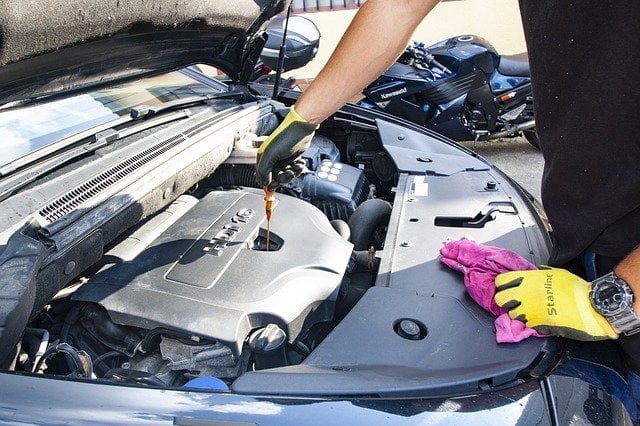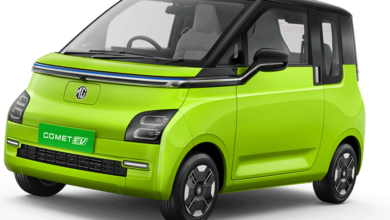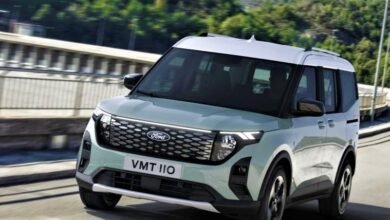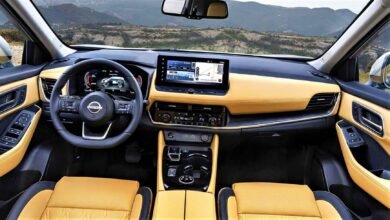
17 different types of car engines | to explain
17 different types of car engines | to explain
The development of automobile engines parallels the development of car models and designs. Simply put, it has a great deal of history as well. Modern automobile engines are complex and tailored to meet our different needs.
Few people prefer more power, while others focus only on fuel efficiency. To meet each customer’s need, auto manufacturers have created several different types of automobile engines over the past few decades. Today we are going to explain each type of automobile engine to increase your knowledge of engines.
internal combustion engine
An internal combustion engine (ICE) is a type of heat engine in which fuel is burned inside a chamber. As the fuel burns inside the engine, it causes an increase in temperature and pressure. This high pressure resulting from combustion is then applied directly to electric pistons, rotors, or nozzles.
It’s the force that moves your car over a distance, converting chemical energy into useful mechanical energy. These motors are generally used in the automotive industries to power cars. An internal combustion engine can be classified on many grounds, for example, ignition type, number of strokes, design, etc.
A heat engine can also be distinguished as an external combustion engine , in which the combustion of fuel is carried out in an external source. Here, we will not develop the external combustion engine because it is not used in automobiles. let’s start.
17. Two-stroke engine
In a two-stroke engine, the piston completes a power cycle in two strokes—one up and down inside the cylinder to complete one revolution in the crankshaft during the time the fuel is burning.
In this type of engine, the end of the combustion stroke and the start of the compression stroke occur simultaneously, which means that the intake and exhaust functions occur at the same time. The two-stroke engine has a higher torque compared to the four-stroke engine.
16. Four-stroke engine
A four-stroke engine is a type of internal combustion engine in which the piston completes four strokes while turning the crankshaft. The mechanism here differs from that of two-stroke engines.
Here the piston moves twice up and down inside the cylinder and completes two revolutions in the crankshaft. This type of engine has a high average compared to two-stroke engines. Four-stroke engines are more commonly used in cars and trucks.
15. Six stroke engine
Although the six-stroke internal combustion engine is in the development stage, it is already creating a lot of buzz in the auto industry. The six-stroke engine has many customized advantages over conventional engines and can lead to increased fuel efficiency, reduced mechanical complexity, and reduced emissions. If you want to read more about the futuristic 6-stroke engine,
14. Reciprocating motor
The main component of a reciprocating engine is the piston, which is used to convert pressure into rotational motion. There may be one or more pistons in the engine; All of them are located inside a cylinder. When compressed gas is injected and heated into the cylinder, the piston(s) initiate a reciprocating or back-and-forth motion. This movement is converted into rotational motion with the help of the crankshaft.
13. Wankel Engine
A Wankel engine is also known as a rotary actuator because it uses an eccentric rotating system (instead of a piston) to convert pressure into rotating motion. It is simpler, smoother and more compact compared to the more popular competitor, reciprocating or piston engine.
Although mechanically better than pistons, Wankel engines are not usually used in the automobile industry. They are not efficient and suffer from poor fuel efficiency and emissions problems.
Because Wankel engines produce more power pulses per revolution than two-stroke and four-stroke engines, they are generally used in racing cars. One of the most common examples is Mazda’s RX-8.
Depending on the ignition method
12. Compression ignition engine
In a piezo ignition engine, the combustion of the fuel in the chamber is triggered by the high temperatures achieved by gas or air due to adiabatic pressure . Diesel engines are a great example of a compression ignition engine because it works only by compressing air.
There are many advantages to owning a diesel engine over other internal combustion engines. High thermodynamic efficiency and low parasitic load on the engine are just a few of those.
11. spark engine
All gasoline engines rely on spark ignition, in which the spark plug ignites the combustion of the air-fuel mixture. Although spark ignition engines are commonly referred to as “petrol engines,” they can also run on LPG, methanol, bioethanol, compressed natural gas (CNG), hydrogen and nitromethane.
10. Electric motor
Unlike conventional ICE-powered cars, electric cars get power from pre-installed rechargeable batteries. These batteries power not only the engine, but also other electrical equipment. An electric motor simply converts electrical energy into mechanical energy.
Although electric cars became fairly popular in the late 1900s, the first ever electric car was produced in the late 1880s. Since 2008, due to concerns about increasing greenhouse gas emissions and rising fuel prices, the growth of electric vehicles has seen a positive trend.
Electric motors are more efficient than conventional internal combustion engines at converting stored energy. It also has higher efficiency on board than diesel engines. Most electric cars today use lithium-ion or lead-acid batteries. Each has its own advantages.
9. HCCI
The HCCI, or homogeneous charge compression engine, is a revolutionary step toward reducing emissions and maximizing fuel efficiency. HCCI technology combines the characteristics of conventional gasoline engines and diesel engines to produce a hybrid solution.
Although its lower core temperature (during fuel combustion) causes a negligible amount of nitrogen oxide emissions, it results in incomplete combustion of the fuel, resulting in relatively high carbon monoxide and hydrocarbon emissions. As of 2017, no HCCI engines have been commercially produced. However, we have several HCCI models in operation.
Based on the number of cylinders
8. Single cylinder engine
Single cylinder engines have a single cylinder attached to the crankshaft. They are compact, lightweight and have a better weight to power ratio. Single-cylinder engines are used in motorcycles, scooters, dirt bikes, and go-karts.
7. Multi-cylinder engine
A multi-cylinder engine is the opposite of the single-cylinder variant: the engine has several cylinders instead of one. It can be a two-stroke or four-stroke engine, either diesel or spark ignition.
They offer several advantages over single-cylinder engines. It is capable of higher revolutions per minute (RPM) and has a superior ability to neutralize imbalances.
According to cylinder arrangement
6. In-line drive
What does it mean when someone says it’s an inline engine? Well, it’s just the alignment or shape of the cylinders. In inline engines, the cylinders are arranged in a straight line – one behind the other – along with the length of the crankshaft.
Of the three different variants, the Inline-4 is the most popular in the auto industry because it’s compact, fuel efficient, and offers a higher power-to-weight ratio than six- or eight-cylinder engines.
5. V . engine
The cylinders and pistons in a V-type engine are aligned in two separate planes, so that they appear to be in a “V” shape when viewed from above. The unique shape of this engine greatly reduces the overall weight and length of the engine compared to inline engines.
4. Engine W
The W engine debuted in 1909, when an Anzani three-bank engine powered a Blériot XI to cross the English Channel. However, the first commercial use of this engine in the automobile industry was achieved by Volkswagen. The W (or double V) engine has three different configurations:
- The first configuration consists of three banks of cylinders that share a common crankshaft. It is also known as the broad arrow formation due to its resemblance to the British broad arrow property mark.
- The second is four banks of cylinders that share a common crankshaft. This is also known as a “double-V” motor.
- The third and final configuration features a two-cylinder engine with two crankshafts.
W-shaped engines are mostly used in Volkswagen cars, most notably in the Bugatti Veyron.
3. OPOC Engine
The OPOC engine consists of two cylinders with a piston at both ends. There is no cylinder head, and therefore no valves. Compared with conventional engines, the piston reciprocating cylinder engine has very low loads, which means that there will be less friction. Due to its small size, it has a high strength-to-weight ratio.
According to the air intake process
2. Inhale naturally
A naturally aspirated engine is a type of ICE engine in which air intake depends only on atmospheric pressure and does not rely on forced induction through a turbocharger or supercharger. Many sports cars specifically use naturally aspirated engines to avoid turbo deceleration. Most gasoline engines in automobiles, as well as many smaller engines used for non-automotive purposes, are naturally aspirated.
1. Supercharged engine and turbocharger
Supercharged and turbocharged engines have some basic differences. A turbocharger uses the crankshaft to drive power and produce power instead of the exhaust stream as in a turbocharger.
The superchargers are connected directly to the engine via a belt and can therefore achieve speeds of up to 50,000 rpm. Since the turbocharger is not directly connected to the engine, it can reach 15,000 rpm. Moreover, the turbocharger is equipped with smog changing kits that reduce carbon emissions, so it is more environmentally friendly than a supercharger.



